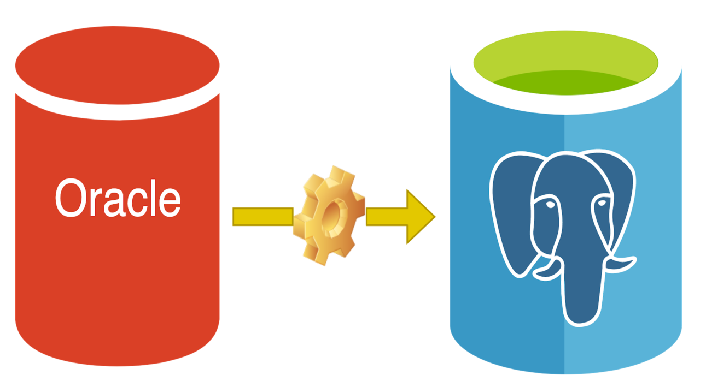
Migrate Data from Oracle to PostgreSQL: A Comprehensive Guide
In today’s data-driven world, choosing the right database management system is crucial for organizations to manage and access their data efficiently. With various options available, migrating from one database platform to another is a common occurrence. One such transition that has gained traction in recent years is migrating from Oracle to PostgreSQL. This comprehensive guide aims to help you navigate through the process of migrating from Oracle to PostgreSQL, highlighting the benefits, challenges, and best practices associated with this transition. Whether you’re a database administrator, developer, or an IT manager, this guide will provide valuable insights and practical tips to ensure a successful migration experience. So, let’s dive in and explore the world of Oracle to PostgreSQL migration, empowering your organization to harness the full potential of PostgreSQL’s capabilities.
Table of Content
PostgreSQL Overview and Benefits Analysis
PostgreSQL, often referred to as Postgres, is an open-source, powerful, and highly extensible relational database management system (RDBMS). Developed initially in 1986 at the University of California, Berkeley, PostgreSQL has since evolved into a robust and feature-rich database solution, maintained and enhanced by a dedicated community of developers worldwide. As an object-relational database, PostgreSQL combines the functionality of traditional relational databases with advanced object-oriented features, enabling users to store complex data types and create custom functions.
One of PostgreSQL’s key strengths is its support for the SQL standard (SQL:2016) with numerous extensions, offering a wide range of functionality and making it compatible with various applications. Additionally, PostgreSQL boasts a unique architecture that supports Multi-Version Concurrency Control (MVCC), enabling multiple transactions to be executed concurrently without conflicts, enhancing performance, and improving database scalability.
PostgreSQL is highly customizable and extensible, allowing users to create their own data types, operators, and functions. It also supports full-text search and various indexing techniques, such as B-trees, hash, and GiST (Generalized Search Tree), optimizing query performance. PostgreSQL is known for its reliability, offering features like write-ahead logging (WAL), point-in-time recovery, and synchronous replication to ensure data consistency and fault tolerance.
Another key advantage of PostgreSQL is its strong support for geospatial data through its PostGIS extension, enabling organizations to store and analyze spatial data for applications such as geographic information systems (GIS) and location-based services.
PostgreSQL is platform-independent, running on various operating systems such as Linux, Windows, macOS, and more. Its open-source nature allows for cost-effective implementation and reduces vendor lock-in, making it an attractive option for businesses and organizations of all sizes.
In summary, PostgreSQL is a powerful, versatile, and reliable RDBMS that offers a wealth of features and customization options. Its open-source model, adherence to SQL standards, and support for complex data types make it a popular choice for organizations looking to migrate from other database management systems or those seeking a flexible, cost-effective solution for their data storage needs.
Transferring Data from Oracle to PostgreSQL: A Comprehensive Guide
In this section, we will delve into the process of migrating your Oracle database to PostgreSQL, providing a detailed, step-by-step guide to ensure a seamless transition. We will explore the use of the PostgreSQL ODBC driver as a crucial component in the migration process. From understanding the differences between the two database systems to using the right tools, such as the ODBC driver, and best practices, we will equip you with the knowledge you need to master the migration process and unlock the full potential of PostgreSQL for your organization.
Connecting Oracle to PostgreSQL
This article details the steps necessary to set up ODBC connectivity with Oracle Database Gateway. Create a database link to an Oracle Database Gateway for ODBC if you need to access data stored in a non-Oracle database system or cloud application from an Oracle Database server. In order to connect to non-Oracle systems or remote Oracle servers, the gateway utilizes an ODBC driver. Using the gateway and the proper ODBC driver, you can connect to any database that supports the Open Database Connectivity standard. The driver has to be put in place on the same computer as the gateway. The Oracle server and the non-Oracle system do not need to be located on the same machine. In order to connect to an Oracle database, the gateway must be installed on either the machine hosting the Oracle database or the machine hosting the non-Oracle system.
Setting Up the Initialization File
Once you have installed both the gateway and the ODBC driver for PostgreSQL, you need to create an initialization file for your Oracle Database Gateway for ODBC. A sample file, initdg4odbc.ora, can be found in the ORACLE_HOME\hs\admin directory. To establish an initialization file for the gateway, make a copy of the sample file and rename it using a prefix of ‘init’ — for instance, initPostgreSQL.ora. Each ODBC data source requires a distinct initialization file. After creating the file, configure the HS_FDS_CONNECT_INFO parameter to match the system DSN you created earlier, such as: HS_FDS_CONNECT_INFO=PostgreSQL
Setting Up Oracle Net Listener
Once you’ve configured the gateway, it’s necessary to set up Oracle Net Listener for communication with the Oracle database. You must include information about the gateway in the listener.ora configuration file, which can be found in the ORACLE_HOME\NETWORK\ADMIN\ directory. The example below demonstrates the address on which the Oracle Net Listener listens (HOST refers to the machine’s address where the gateway is installed):
LISTENER = ( DESCRIPTION_LIST = ( DESCRIPTION = ( ADDRESS = (PROTOCOL = TCP)(HOST = localhost)(PORT = 1521) ) ) )
Add an entry to the listener.ora file to initiate the gateway upon receiving connection requests. The gateway’s SID (SID_NAME) should be consistent in both listener.ora and tnsnames.ora files. ORACLE_HOME refers to the Oracle home directory containing the gateway. To implement the updated settings, stop and restart the Oracle Net Listener service.
SID_LIST_LISTENER = ( SID_LIST = ( SID_DESC = (SID_NAME = PostgreSQL) (ORACLE_HOME = D : \ORACLE_HOME) (PROGRAM = dg4odbc) ) )
Configure Gateway Access in Oracle
Include a connect descriptor for the gateway in the tnsnames.ora file, which is located in the ORACLE_HOME\NETWORK\ADMIN directory. Make sure the SID is identical to the value specified in the listener.ora file.
PostgreSQL = ( DESCRIPTION = ( ADDRESS = (PROTOCOL = tcp)(HOST = localhost)(PORT = 1521) ) ( CONNECT_DATA = (SID = PostgreSQL) ) (HS = OK) )
Establish Database Links
To access an ODBC data source, create a database link using a database tool like SQL Developer. Connect to your database server and execute the CREATE DATABASE LINK statement as shown below:
CREATE DATABASE LINK dblink CONNECT TO "username" IDENTIFIED BY "password" USING 'tns_name_entry';
Here, dblink refers to the full database link name, and tns_name_entry is the Oracle Net connect descriptor specified in the tnsnames.ora file.
Once the database link is created, refresh and expand the connection in SQL Developer’s left pane. You should see the newly created link in Database Links. To run a query against the ODBC data source, use the following syntax:
SELECT * FROM table_name@"dblink_name"
Summary
The blog post “Get Data from Oracle to PostgreSQL using ODBC” provides a comprehensive guide for database developers to migrate data from an Oracle database to a PostgreSQL database using ODBC drivers. The post covers different stages of the migration process, including configuring the initialization file, Oracle Net listener, and creating database links to access the ODBC data source.
The guide also includes practical steps, SQL queries, and screenshots for each step to help developers understand and implement the migration process successfully. The article emphasizes the importance of careful planning, testing, and backup to ensure a seamless migration process.
Overall, the post provides a valuable resource for developers looking to migrate from Oracle to PostgreSQL and showcases the power and flexibility of ODBC drivers for database migration.


